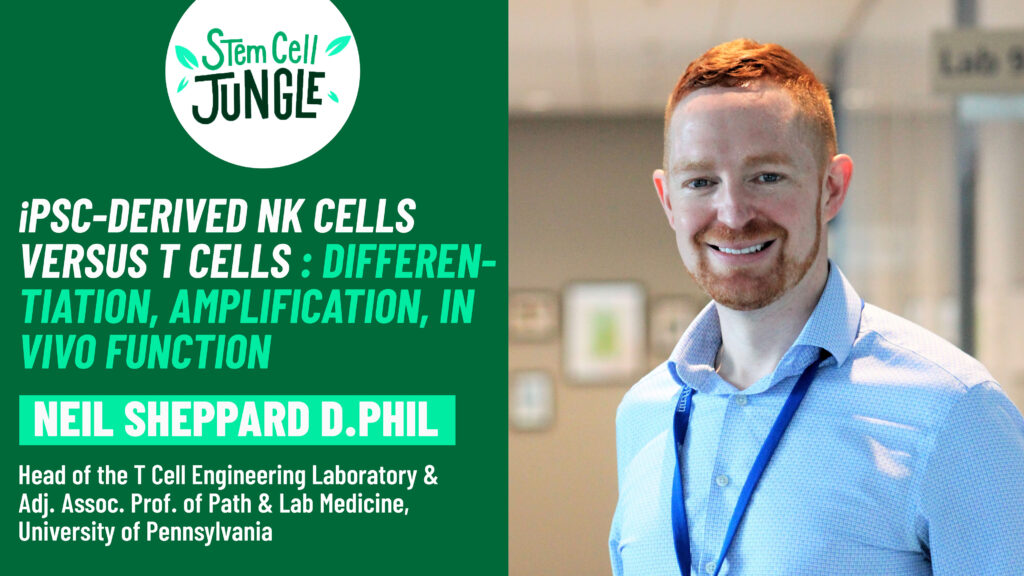Neil Sheppard, D.Phil, Adjunct Associate Professor in the Department of Pathology & Laboratory Medicine, and Head of the T Cell Engineering Lab (TCEL), at the Center for Cellular Immunotherapies (CCI) at the University of Pennsylvania has a 20-year experience in the field of immunotherapies and vaccines. In this interview, he highlights the difference cell sources available to make allogeneic NK and T cells, the related manufacturing challenges, as well recent clinical results with such products.
Transcript:
Some companies are blazing a trial using healthy adult donors, some are using cord blood derived NK-cells, some use the stem cells from the cord blood to make NK-cells. And then the ones that use iPSC technology to make NK-cells. It definitely seems much easier to get an authentic NK cell out of an iPSC, than an authentic T cell. I say easy, it’s clearly not easy. I think companies have spent more than a decade perfecting it but comparatively, you’re more likely to get a good NK than a good T cell out of an iPSC. And you know you can grow these cells for a long time, that’s one of the downsides of T cells is that it’s very conclusively shown that the more you grow them the more they exhaust. And this is why the Novartis is planning to move from nine days to two days and why data from the paper on the one day process looks better than the nine day process.
The less you do to the T cells outside the body, the better they are. With NK cells it doesn’t seem to be the case. And many of these companies grow NK cells from healthy donors and cord blood etc for two or three weeks, to get really large numbers. You can potentially grow them at a bioreactor scale, maybe in the future. And iPSCs of course give you like the ability to make massive numbers of NK cells to then use. I see them repeatedly giving good data in hematological malignancies. So unmodified NK-cells of the right phenotype they’re kind of adaptive or memory-like phenotypes seem to be very potent in AML. And I think that will be one of the places they get approved. The CD19 CAR-NK look really promising. The only thing I would caution is that a lot of the trials we’ve seen are only very small in scale. Some of them use fresh NK cells because NK cells are difficult to cryopreserve. So that needs fixing. And the doses used can be quite large. So some of these companies reporting recently are using doses of a billion cells per infusion and they’re giving three infusions per cycle and they’re giving two infusion cycles so then that’s six billion cells per patient. That makes me wonder how… I’m not quite sure I believe them yet if they say they can make a production run does a thousand patients. I don’t think that they really say that until they’ve worked out how many NK cells each patient needs.


